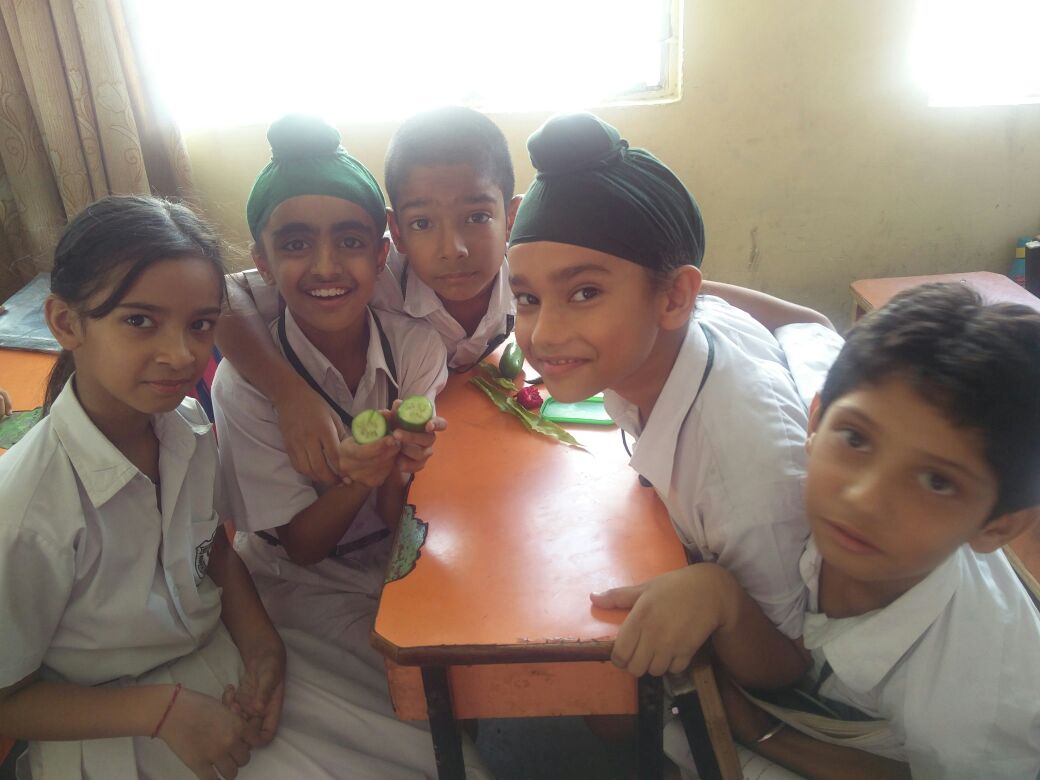
Delhi Public School Bathinda, Punjab
Class IV, October 2017
Small Science – Class 4
Chapter 6 – Water and life
Water in plants
We did this beautiful set of activities over the course of one week. As preparatory work I asked students to gather material for the weighing balance which they had learnt to make in Class III.
On the first day students brought to class several kinds of leaves, flowers, vegetables and fruit. I asked them to keep their material on the table and observe the activities very carefully.
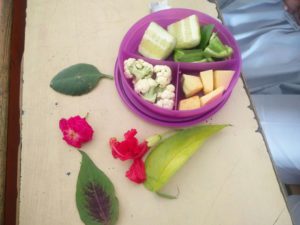
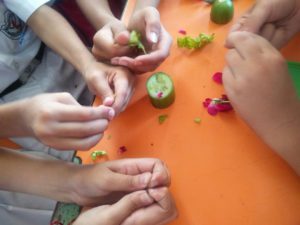
Students crushed the leaves and flowers between their fingers and were surprised to see that their fingertips were moist and coloured different colours and shades. They got very excited and showed their wet fingertips to each other and to me.
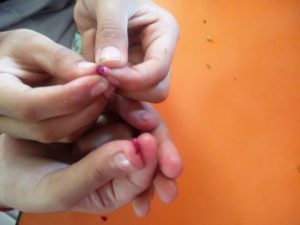
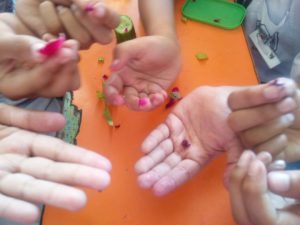
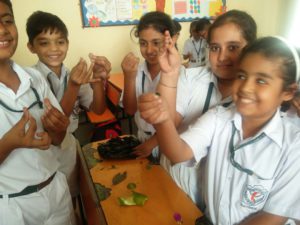
Then they put salt on the cut vegetables and fruits and kept them aside. They observed the cut fruit and vegetables after 5, 10 and 30 minutes. At 5 minutes they observed that there were water droplets on the pieces of fruit and vegetables. After 10 minutes there was a small amount of water around the pieces and after 30 minutes and there was a pool of clear water in the bowl.
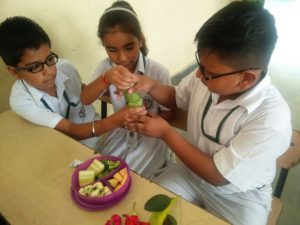
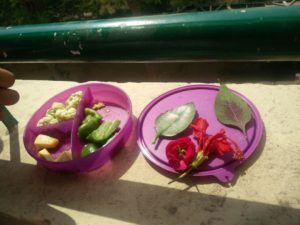
At this extreme point of excitement I asked them lots of questions like, “Where did the water come?” “How did the water get into the fruit and vegetables?” “Does the water come out of the plant?” “If this water goes out what will happen to the plant?” “Does water also come into the plant?” “Do different fruits and vegetables give out different amounts of water?” “Does the size of the pieces or their colour affect how much water comes out?” I discussed some of these questions in class and explained a few of the answers.
For the next class I told them to bring materials for their weighing balance with two fresh flowers of the same size and variety. I told them we would do some experiments to find answers to some of their questions.
The next day students were eagerly waiting for me in the class. Their level of enthusiasm and zeal for learning took the entire learning environment to the next higher level!
Students were all excited to start the activity. They used their previous year’s learning and made weighing balances. Then they kept two flowers of the same size and type in the two pans of the balance and cut off a little bit of stem from the heavier side until both the flowers weighed equal.
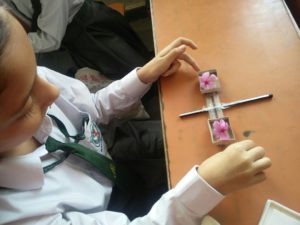
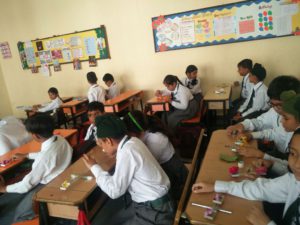
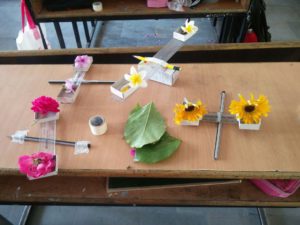
After this they kept one flower with its stem in water and left the other flower outside the water. Four students kept their flower out in the sun instead of in water and waited eagerly for tomorrow to see the result.
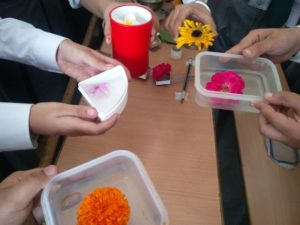
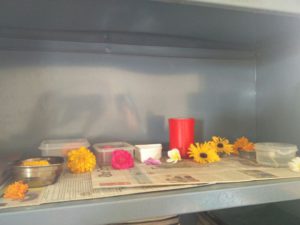
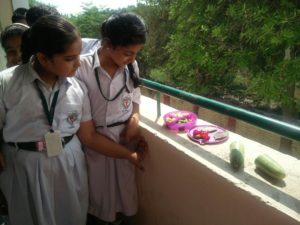
The next day the students set up their weighing balance again. (They love to make this balance and are very quick in doing it.) They then collected their flowers from the shelves. They observed the changes in the flower kept outside in the shade, inside the water, and kept in the sun. They were surprised to see that the flower that was kept outside the water had drastic changes in term of colour, size, shape and weight.

They put both flowers, kept in and out of water, on two sides of the balance. Then they added water drop by drop to the pan with the dry flower and counted the number of drops they had to add to make both the flowers balance.
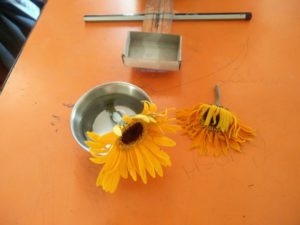
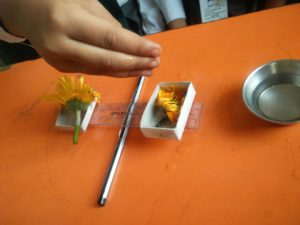
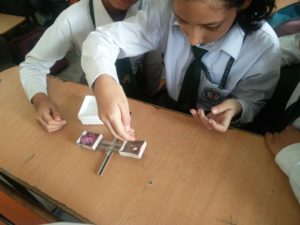
They all were very excited when they were counting the drops and were surprised to see that lot of water is evaporated from a single flower. They also observed the flower kept in the sun, outside in the shade and inside the water. Later on they discussed the observations and wrote them down in their workbooks.
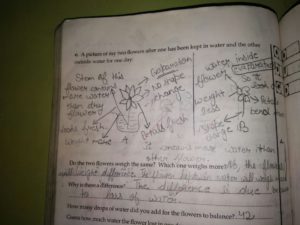
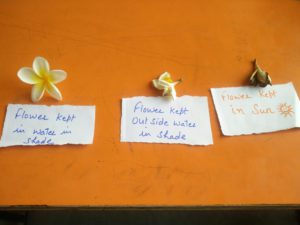
In interpreting the results students easily understood that losing water leads to decrease in weight of the flower. It was difficult for them to imagine that the flower whose stem is in water is taking in water and simultaneously losing it also. So probably its weight did not change. At first about 60% of the students imagined that evaporation took place only in the dried flower but 40% students said that evaporation took place in both the flowers. I feel that after conducting the activities and discussing the results all the student in my class understood the concept that all plants take in water and also give it out.
These 3 to 4 day activities gave me immense satisfaction in explaining to my students the topic of water in living things.
Ms. Anu Sandeep Kaur
Co-ordinator, Primary School



